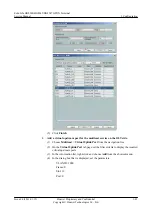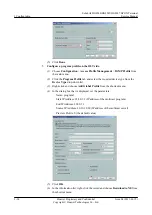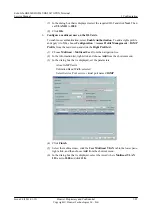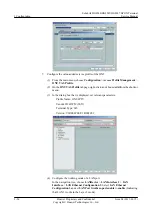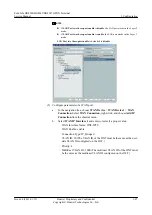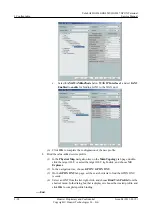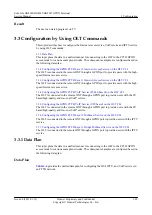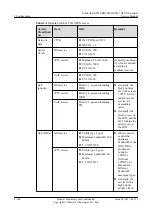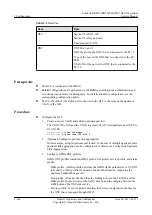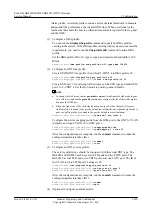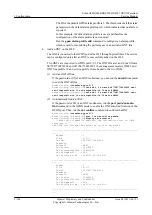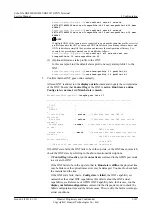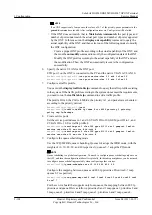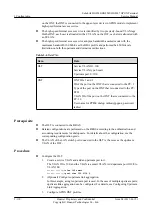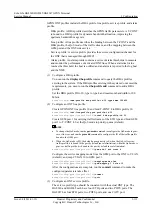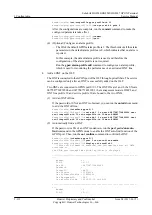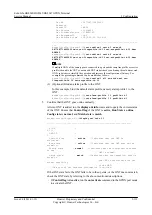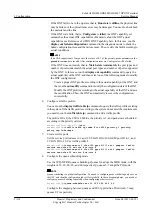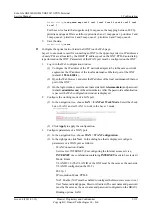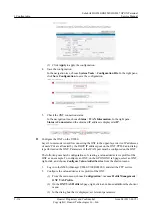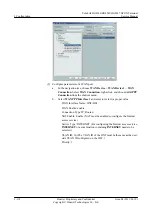
Table 3-5
Data Plan
Item
Data
OLT
Service VLAN ID: 100
Service VLAN type: Smart
Upstream port: 0/19/0
ONT
ONT IDs: 1 and 2
ID of the port on the ONT that is connected to the PC: 1
Type of the port on the ONT that is connected to the PC:
ETH
VLAN ID of the port on the ONT that is connected to the
PC: 10
Prerequisite
l
The OLT is connected to the BRAS.
l
Related configurations are performed on the BRAS according to the authentication and
accounting requirements for dialup users. For details about the configuration, see the
corresponding configuration guide.
l
The VLAN of the LAN switch port connected to the OLT is the same as the upstream
VLAN of the OLT.
Procedure
l
Configure the OLT.
1.
Create a service VLAN and add an upstream port to it.
The VLAN ID is 100, and the VLAN is a smart VLAN. Add upstream port 0/19/0 to
VLAN 100.
huawei(config)#
vlan 100 smart
huawei(config)#
port vlan 100 0/19 0
2.
(Optional) Configure upstream link aggregation.
In this example, a single upstream port is used. In the case of multiple upstream ports,
upstream link aggregation can be configured. For details, see Configuring Upstream
Link Aggregation.
3.
Configure GPON ONT profiles.
GPON ONT profiles include the DBA profile, line profile, service profile, and alarm
profile.
–
DBA profile: A DBA profile describes the GPON traffic parameters. A T-CONT
is bound to a DBA profile for dynamic bandwidth allocation, improving the
upstream bandwidth usage rate.
–
Line profile: A line profile describes the binding between the T-CONT and the
DBA profile, the QoS mode of the traffic stream, and the mapping between the
GEM port and the ONT-side service.
–
Service profile: A service profile provides the service configuration channel for
the ONT that is managed through OMCI.
3 Configuration
EchoLife HG8240/HG8245/HG8247 GPON Terminal
Service Manual
3-104
Huawei Proprietary and Confidential
Copyright © Huawei Technologies Co., Ltd.
Issue 04 (2011-01-12)




